Hosting coaching clinics at the Carl Kuster Mountain Park (CKMP) training facility on our single-track network, I find it very interesting to see the different ways people get stuck on hills and sidehills. I use the term “interesting” because people can have different methods of recovering from a failed attempt at a hillclimb. When things go sour, they often eject from the bike, launch the bike into a half backflip or send their bike into a tree or completely off the trail altogether.
This article is going to cover some different methods I typically use to vanquish an incline, and how I recover from error with the most efficient damage control, leading to little to no harm to you and even more importantly, your motorcycle.
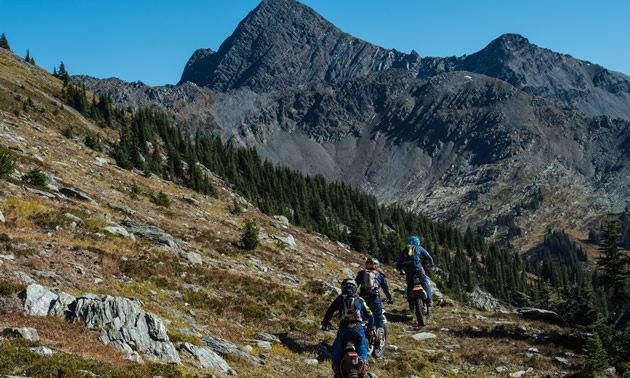
CKMP’s training facility is 300 acres of diverse riding terrain at the toe of Queest Mountain. An ever-growing network of technical single-track and super-fast GNCC-style skidder trails sprawl over the property, making for some extremely fun riding that is friendly for all ages and riding abilities. The variety makes this venue a perfect working environment for an instructor. — Rob Alford Photography
The art
When talking technique and theory of hillclimbs, we have to take into consideration that there are many variations of size, pitch and terrain of inclines. Therefore, we need to use different methods to get to the top of different style hills. Being able to read what lies ahead of you on the climb and having a smart game plan on where you want to apply the power to the ground and where you need to shift your body position are often half the battle for fresh faces in the off-road world.
Gather momentum
Starting with the basics, I always say for any hillclimb that you want to gather the majority of your momentum at the bottom of the hill, preferably before the earth starts to incline. This is because when riding on flat or subtle inclines you are much less likely to break traction and lose your momentum, which you will need to be able to shoot to the top of the hill.
Ideally, when you have a nice straight run at a hill and you have acquired all of your necessary speed at the bottom of the incline, you should be able to gently back off the throttle as you are climbing the hill. Being able to roll off the throttle as you ascend makes it almost impossible to break traction to the rear wheel.
Often, the hill is too long to coast the entire way up the hill, which means you will have to give the bike some throttle to burst up and over obstacles or snotty terrain. Knowing when to apply the power as you climb the hill is a tricky task. I always look for what I call “holes” to chop the throttle.
This means if it was a hill consisting of dirt and medium-sized rocks, I would approach the hill with about three-quarters throttle to gain most of my speed before I start the climb and then apply power just before the face of each and every rock or bump just to assist my wheels enough to coast over the obstacles with little to no resistance to slow me down. Try to avoid bouncing off obstacles and being thrown into the air. Every time your wheels leave the ground you risk breaking traction as you land back on the ground.
Each and every time you “chop” the throttle or apply power in these “holes,” it is important you use your body to push your weight into the rear wheel to make sure you’re gaining every inch out of of every effort you make.
Body position
Weighting the bike is the difference between making the climb or being catapulted into the bush. Not only is it important to hold your balance from side to side to keep your feet on the pegs, but it is also just as important to be aware of where your torso is in relation to your bike—as this determines what weight is being forced through the wheels of your bike.
As you start to incline, your shoulders should start to come forward on the bike. How far forward will vary on the pitch you are climbing. You don’t want to lean so far forward that you are front-end heavy and start to spin the back wheel. The intention of leaning forward over the bars is just to weight the front wheel to the ground so you can still control your bike and make necessary turns. Keep a slight bend in your elbows as you will inevitably be encountering unexpected bumps or jolts. You want to absorb these as best you can without disrupting the bike’s direction.
Imagine your legs are just big shock absorbers, which slow down and reduce the magnitude of the rough terrain you are riding. Only now, because they are your own legs controlled by your own brain rather than a mechanical setting, you can adjust the dampening and rebound according to each and every obstacle you encounter. Just like your elbows, your knees should always have a slight kink to create a bend in your legs. This acts as your slack so that you’re ready to absorb any unexpected roughness at all times.

Riding single-track, dirt bikers will encounter a variety of obstacles and terrain. — Rob Alford Photography
Hot tip
Every time you “coast” (this is when you continue ascending the hill without the use of your throttle) in between these holes (brief area of consistent tractable surface), you need to be cautious as you reapply the power. Often, you will need to pop the clutch while loading the throttle, which will send you over any obstacles—such as roots, ruts, logs, rocks or just that snotty stuff that is often found on hillclimbs.
Recovery
Recovering from a failed attempt at a hillclimb is something we all need to learn as we start to push our skill limitations. The only way to become a better rider is to ride more and try things that are out of our skill level. It is key to be able to recover using minimal physical energy.
Often, you will realize that your high hopes of hitting the top of the hillclimb are coming to an abrupt end before you actually come to a complete stop or lose control of the bike. Once you start to break traction and lose the majority of your momentum, I would start evaluating the best and most achievable place to turn your bike 90 degrees to the face of the hillclimb.
Turning your bike to face perpendicular to the hill means you will now have a low side and a high side of your motorcycle, allowing you to easily reach the hillside with your foot on the high side of the bike. This will give you a second to take a breath and think about your next attempt. Being sideways on the hill also means that now when you’re stopped on the hill, gravity is not trying to pull you back down.
Exiting this recovery position can be a strange feeling for the first few endeavours. As you turn your bars to face downhill, committing to ride your bike out and down the hill can be a scary notion. The truth is, the more committed you are, the easier it is to flow back down the hill.
Having your feet on the pegs, a strong mindset and a standup body position with consistent and gentle braking is a formula for success. One foot on the ground rather than covering your rear brake and a bum-on-the-seat style with choppy, intense braking is asking for a front-end washout and/or losing traction and going sliding down the hill rather than riding it out with style and ease.
Hot tip
For everything you’re doing on two wheels, your head determines where your body and bike go. Try to see your line before you’re actually riding the hill. Always keep your head up as you’re approaching the hill and keep your eyes forward to spot your line. This will give your brain and body time to prepare for what is coming up quickly.
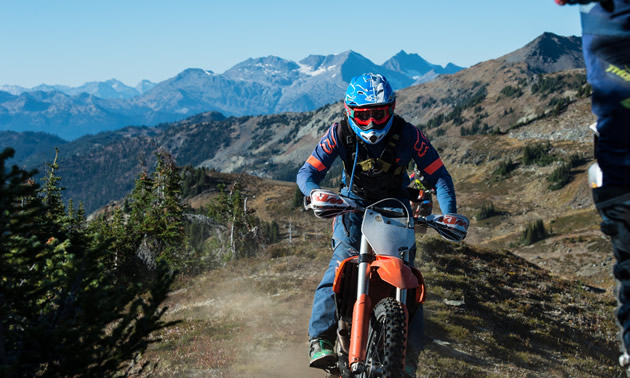
Jason Ribi, instructor and guide at CKMP, keeps his head up and eyes forward to spot a line. — Ryen Dunford Photography
Ride The Vibe
Now that you know the fundamentals for tackling hills, get out there and ride! If there is one thing to take away from this article it would be this: don’t be afraid to try different techniques that work best for you. It is OK to be aggressive on the throttle so long as you’re smooth on the clutch.
Keep an eye out for updates as CKMP—in conjunction with myself at Ride The Vibe—release dates and info for training camps, as well as skill-building adventure rides in the most epic mountains B.C. has to offer.

Sam King and his dog Tiki perform their two-wheeled wizardry during a Ride The Vibe show. — Jesse Oatway photo
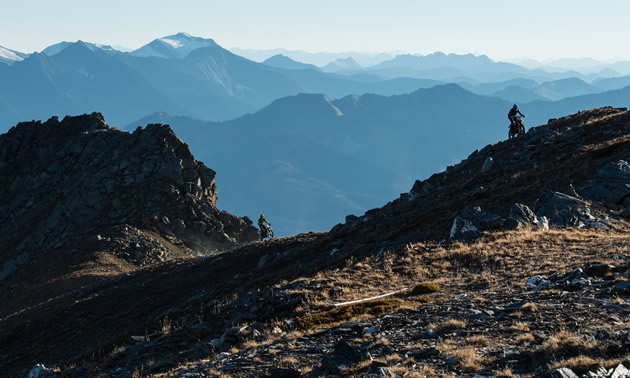



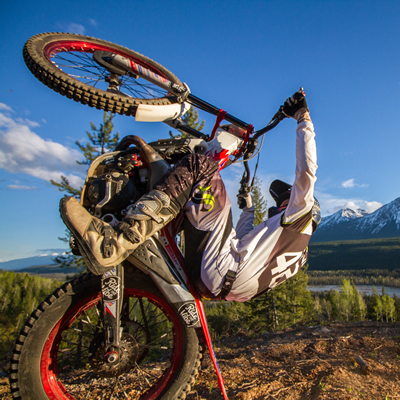
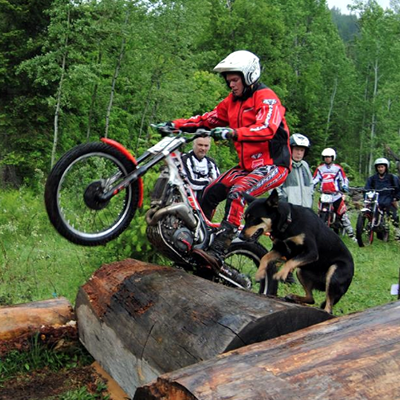

Comments